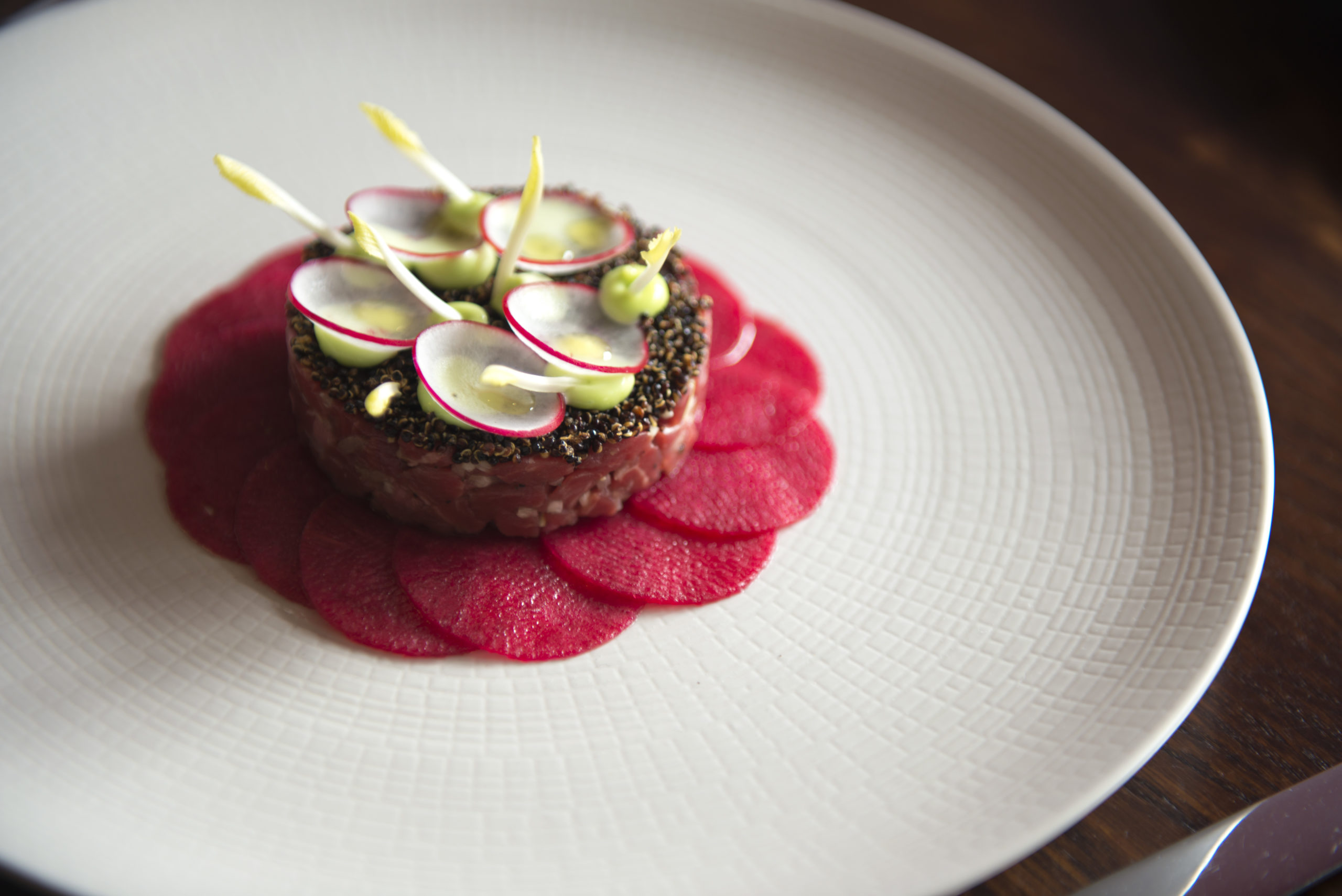For the tartare mixture
- 350 g trimmed fillet of Irish prime beef (dry aged 28 days)
- sea salt and freshly-ground black pepper, to taste
- 2 small shallots, peeled
- 20 horseradish shoots, washed
- wasabi paste, to taste
For the pickled mooli
- 1 mooli, peeled
- 150 g sugar
- 150 ml white wine vinegar
- 100 ml water
- 50 ml beetroot juice
For the wasabi mayonnaise
- 125 g mayonnaise
- wasabi paste, to taste
For the fried quinoa
- 25 g black quinoa
- 200 ml grapeseed oil
To serve
- 6 red radishes, washed and thinly sliced
- olive oil


